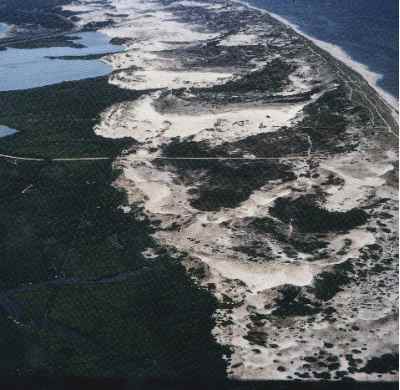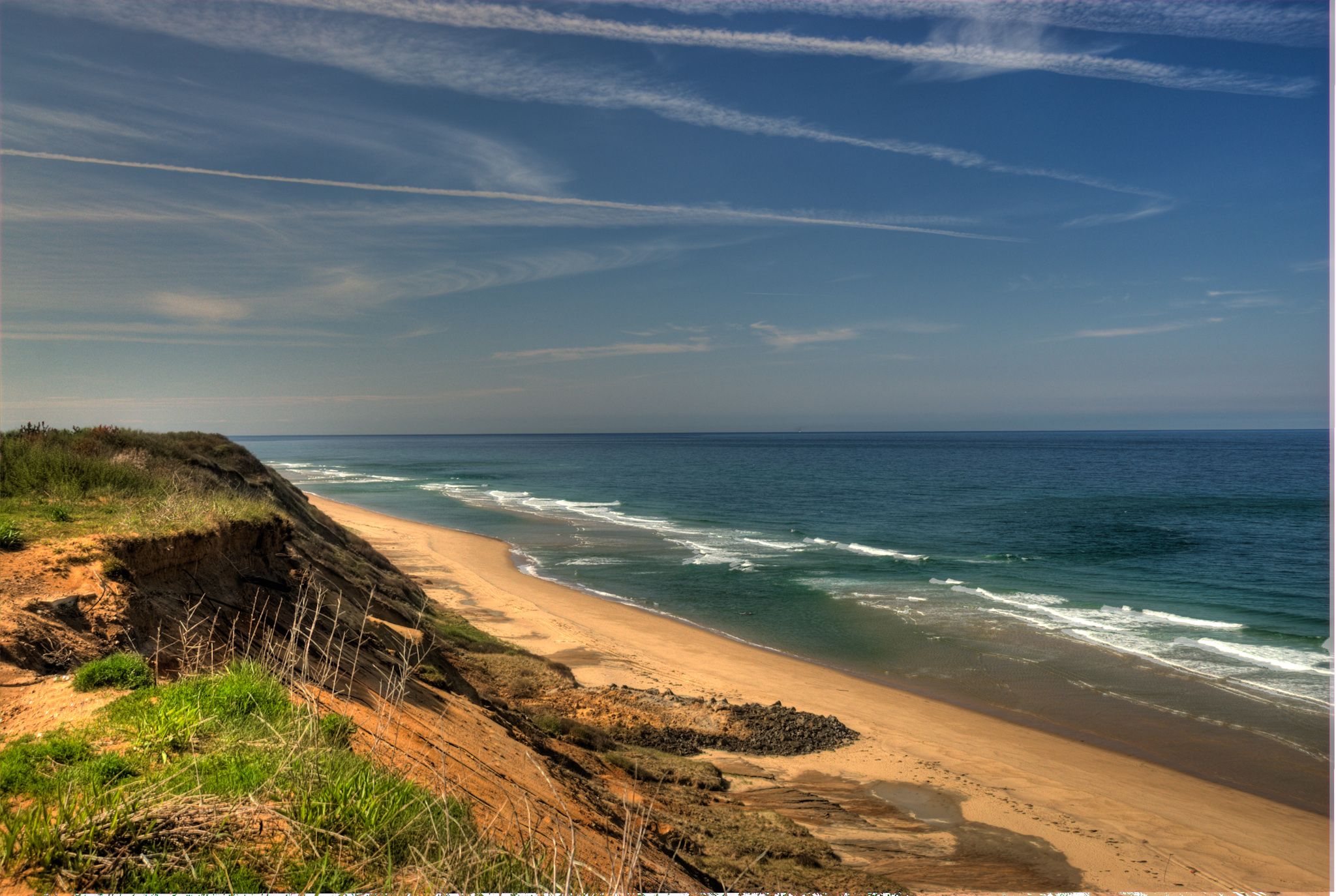Located on the southeastern corner of Massachusetts, Cape Cod is the “extending arm” typically associated with the appearance of the state. Cape Cod includes several cities: Provincetown at the northern-most tip, Falmouth, and Chatham to the southeast, among others (Cape Cod Web). Close to Cape Cod are the two islands of Martha’s Vineyard and Nantucket. The chain of land creates a horseshoe-shape surrounding Cape Cod Bay. Woods Hole is the southernmost city on Cape Cod and home to two major scientific institutions, the Marine Biological Laboratory and the Woods Hole Oceanographic Institute (Woods Hole). The Marine Biological Laboratory, founded in 1888, is affiliated with the University of Chicago (MBL). The Woods Hole Oceanographic Institute, whose mission statement declares that it “is dedicated to research and education to advance understanding of the ocean and its interaction with the Earth system, and to communicating this understanding for the benefit of society” was established approximately forty years later, in 1930 (WHOI).
 When one thinks of Cape Cod, thoughts of breathtaking scenery and boating over miles of New England waters come to mind. However, the real attraction of the northern tip of this gigantic peninsula (in addition to the shop-filled seaside streets of Provincetown), is an endless wall of parabolic sand dunes (parabolic, in this sense, simply meaning U-shaped). Years of erosion of the nearby scarps (steep slopes), the consistent presence of wind, and steady accumulations of sand, have all led to the growth and stability of these dramatic dunes (Guide’s Guide).
When one thinks of Cape Cod, thoughts of breathtaking scenery and boating over miles of New England waters come to mind. However, the real attraction of the northern tip of this gigantic peninsula (in addition to the shop-filled seaside streets of Provincetown), is an endless wall of parabolic sand dunes (parabolic, in this sense, simply meaning U-shaped). Years of erosion of the nearby scarps (steep slopes), the consistent presence of wind, and steady accumulations of sand, have all led to the growth and stability of these dramatic dunes (Guide’s Guide).
In 1961, John F. Kennedy established the Cape Cod National Seashore, which includes over 40,000 acres of land, as a United States National Park (Nature). Since then, the National Park Service has worked diligently to maintain the sand dunes through beach-grass planting efforts (Guide’s Guide) and regular monitoring. Westerly winds have hits the dunes consistently for decades, opening their centers so that they now all face west.
According to statistics published in 2008, nearly six million people visit Cape Cod each year, with over 60% of them visiting in the summer months (Cape Links). Despite this dramatic influx of tourists, however, Cape Cod remains in many ways a natural wonder. At the same time, Cape Cod has recently faced significant pollution problems, with the issue becoming increasingly worrisome with each passing year. In a mere forty years, between 1950 and 1990, the population of Cape Cod grew by 400  percent, with septic systems making up 97 percent of the total waste removal on the peninsula (wicked local). This increase has caused rising nitrogen to end up in the groundwater and bodies of freshwater throughout the area. In addition, climate change and elevated water levels are affecting underground water tables, threatening the coastline, increasing the severity of storms, and influencing all of Cape Cod’s fresh water. As water tables rise, they cause fresh groundwater to float atop the denser saltwater (image at right), forming freshwater bubbles beneath the land’s surface. In addition, as sea levels rise, higher tides will jeopardize static shorelines and shallow septic systems (eco-RI). When the water comes into contact with septic systems, it contributes to the already contaminated water source. Although many efforts have been made, and continue to be made, to maintain the natural beauties of Cape Cod, there is still great potential for the historic seaside towns to be overtaken by pollution, overpopulation, and other hazards. Thus, it is vital that society continues to work towards an overall urbanatural balance, seeking ways for the ever-increasing human populations to live in accord with their environment.
percent, with septic systems making up 97 percent of the total waste removal on the peninsula (wicked local). This increase has caused rising nitrogen to end up in the groundwater and bodies of freshwater throughout the area. In addition, climate change and elevated water levels are affecting underground water tables, threatening the coastline, increasing the severity of storms, and influencing all of Cape Cod’s fresh water. As water tables rise, they cause fresh groundwater to float atop the denser saltwater (image at right), forming freshwater bubbles beneath the land’s surface. In addition, as sea levels rise, higher tides will jeopardize static shorelines and shallow septic systems (eco-RI). When the water comes into contact with septic systems, it contributes to the already contaminated water source. Although many efforts have been made, and continue to be made, to maintain the natural beauties of Cape Cod, there is still great potential for the historic seaside towns to be overtaken by pollution, overpopulation, and other hazards. Thus, it is vital that society continues to work towards an overall urbanatural balance, seeking ways for the ever-increasing human populations to live in accord with their environment.
